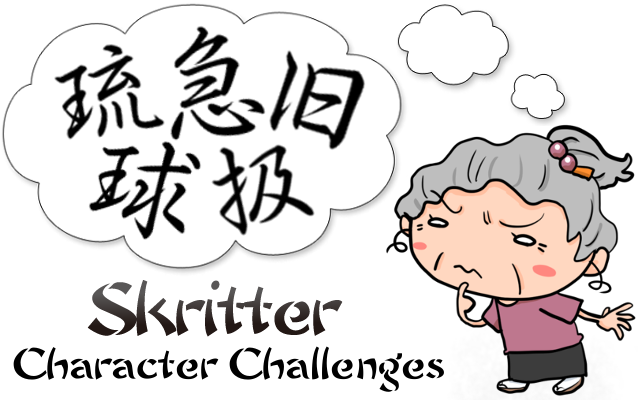 Do you know some characters? Are you up for a challenge? Starting with this post, we will run monthly character challenges for Chinese and Japanese. These are meant to help you learn characters in a fun and engaging way. To solve these puzzles, you will often be required to compare and connect characters, something which most students don’t do enough.
Do you know some characters? Are you up for a challenge? Starting with this post, we will run monthly character challenges for Chinese and Japanese. These are meant to help you learn characters in a fun and engaging way. To solve these puzzles, you will often be required to compare and connect characters, something which most students don’t do enough.
Character challenges: A fun and engaging way to learn!
If you think this looks familiar, that might be because we used to run challenges like these on social media roughly a year ago. This is a revival, which will use both new content and some of the old content. If you’re new, this doesn’t matter, but if you’re a veteran, we will make sure to post the new challenges first!
So, what are these challenges about? We will look at a few examples below, but in general, they are tricky questions about characters that require both knowledge and wit to solve. There is no competition involved; you challenge only yourself. Answers will also be provided, but please note that in many cases, there are more than one possible answer.
Example challenge for Chinese
What single Chinese character can form words with all the characters below?
- 你
- 吃
- 像
- 美
Answer: 好
- 你好 (hello)
- 好吃 (tasty)
- 好像 (it seems)
- 美好 (fine, happy)
Example challenge for Japanese
Which of the following kanji doesn’t belong?
- 匂
- 饂
- 臭
- 込
- 畑
Answer: 臭 (only kanji which isn’t a kokuji)
Monthly character challenges on the Skritter blog
 There are many different types of challenges, some fairly easy, others very hard. Again, please not that there are often alternative solutions, so even if your answer is different from ours, it doesn’t necessarily mean that you’re wrong!
There are many different types of challenges, some fairly easy, others very hard. Again, please not that there are often alternative solutions, so even if your answer is different from ours, it doesn’t necessarily mean that you’re wrong!
As an appetizer for challenges to come, here are two more challenges, first for Chinese, then for Japanese. The answers are provided at the very bottom, but peek only when you’ve done your best yourself!
If you have suggestions for more challenges, please e-mail us! Contact Olle for Chinese and Jeremy for Japanese.
- 使
- 改
- 明
- 地
Chinese challenge #2: Which character does not belong in this group and why?
- 在
- 材
- 再
- 财
Japanese challenge #1: Which kanji doesn’t belong?
- 旧
- 扱
- 急
- 琉
- 球
Japanese challenge #2: The sentence below contains kanji, which can create a logical sentence if each have the appropriate reading. What does it say?
- 茶連時市用!
Chinese answer #1: 天: 天使 (angel), 改天 (another day), 明天 (tomorrow), 天地 (world; heaven and earth)
Chinese answer #2: 再, because it’s the only character that doesn’t have 才 as the phonetic component.
Japanese answer #1: 琉, because it’s the only kanji which cannot be read as きゅう
Japanese answer #2: チャレンジしよう

